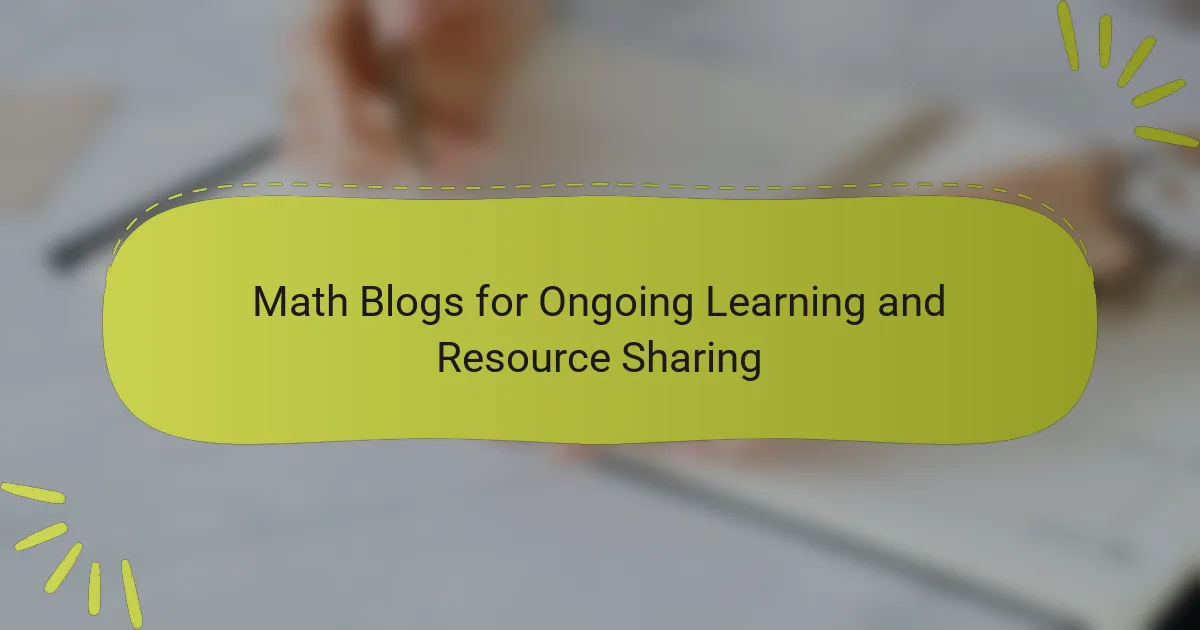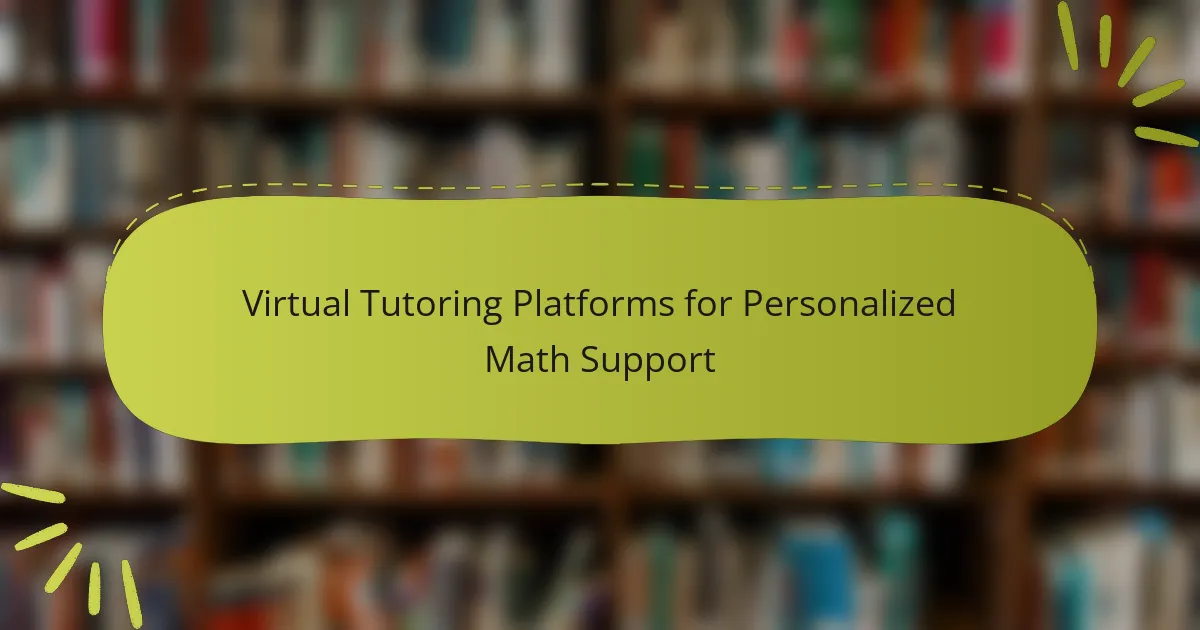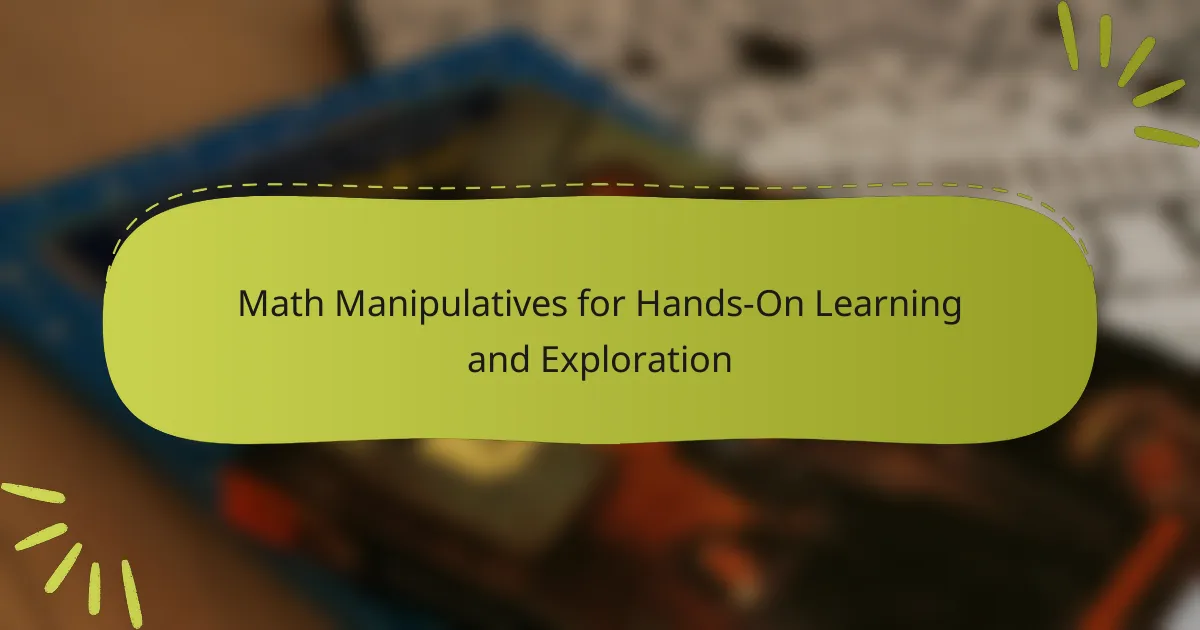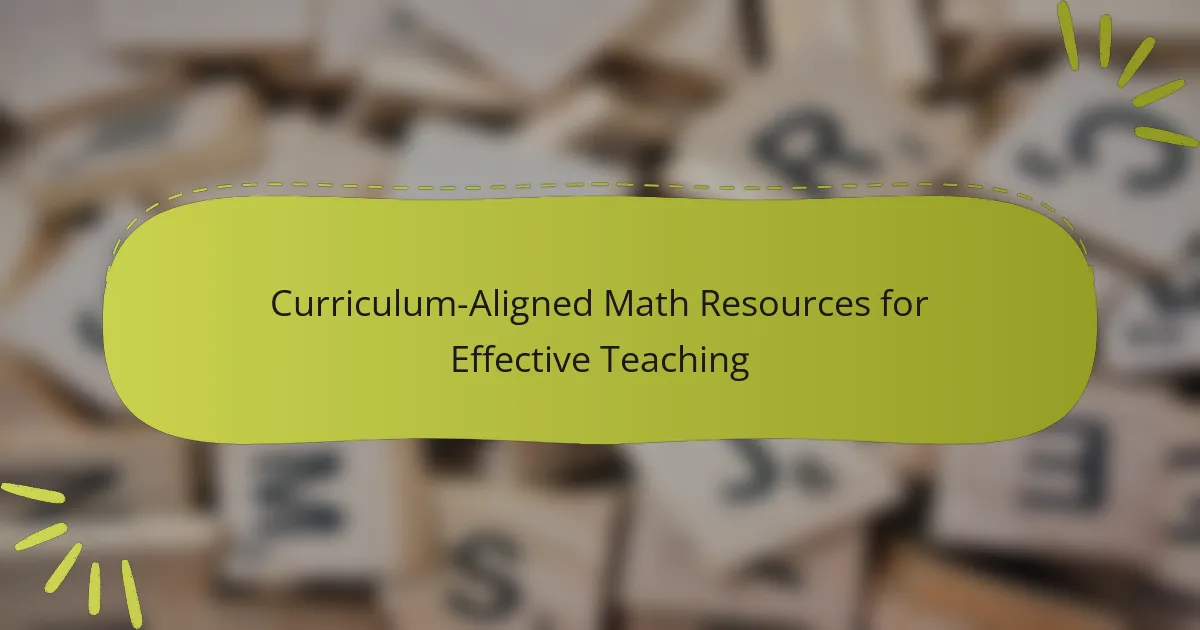Visual learning tools are educational resources that utilize visual aids such as diagrams, graphs, charts, and manipulatives to enhance mathematical understanding. These tools facilitate the visualization of concepts and relationships, leading to improved comprehension and retention among students. Research has shown that integrating visual aids into lesson plans can significantly boost engagement and learning outcomes, with retention rates increasing by up to 65%. Effective implementation of these tools includes selecting appropriate resources, encouraging students to create their own visual representations, and providing regular feedback to enhance their effectiveness. Overall, visual learning tools support diverse learning styles and simplify complex mathematical information.
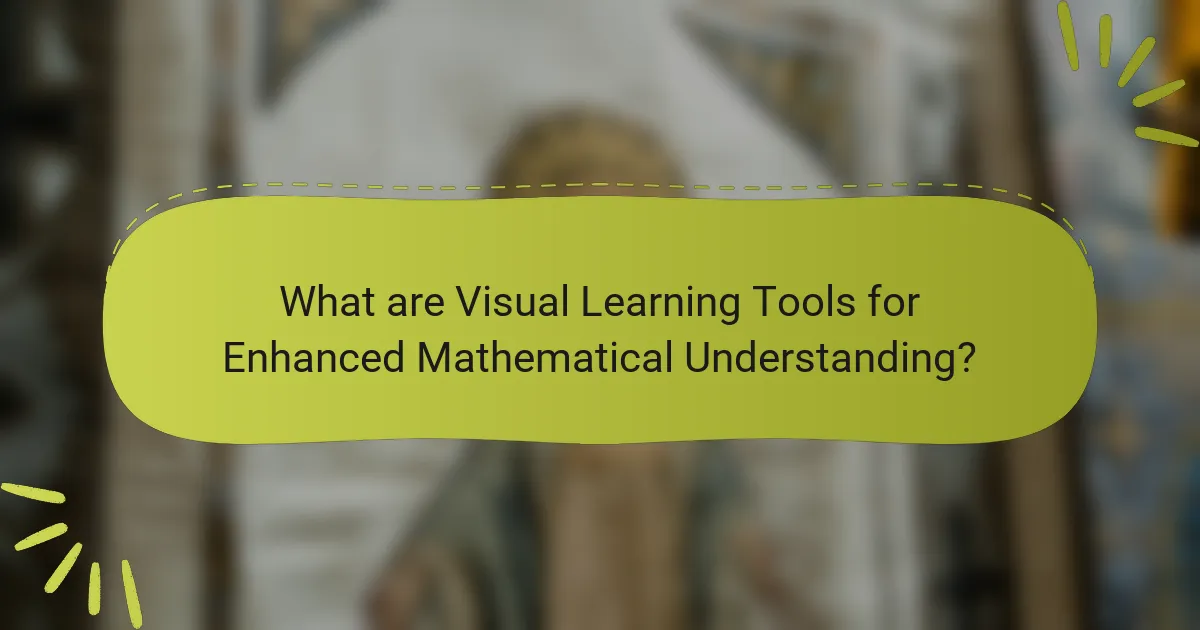
What are Visual Learning Tools for Enhanced Mathematical Understanding?
Visual learning tools for enhanced mathematical understanding are resources that use visual aids to facilitate learning. These tools include diagrams, graphs, charts, and manipulatives. They help students visualize mathematical concepts and relationships. Research indicates that visual learning can improve comprehension and retention. For instance, studies show that students using visual tools perform better on problem-solving tasks. Visual aids can also simplify complex information. They make abstract concepts more tangible. Overall, these tools support diverse learning styles and enhance engagement in mathematics.
How do Visual Learning Tools facilitate mathematical concepts?
Visual learning tools facilitate mathematical concepts by providing visual representations of abstract ideas. These tools include graphs, charts, and interactive software. They help learners to visualize relationships between numbers and operations. For example, a graph can illustrate the slope of a line, making it easier to understand linear equations. Research shows that visual aids improve retention and comprehension. According to a study by Mayer (2001), students who use visual learning tools perform better in problem-solving tasks. This indicates that visual tools enhance understanding by bridging the gap between theory and practical application.
What types of visual aids are commonly used in mathematics?
Common visual aids used in mathematics include graphs, charts, diagrams, and manipulatives. Graphs visually represent data and relationships, making trends easier to understand. Charts, such as bar or pie charts, summarize information and compare quantities. Diagrams illustrate geometric concepts and relationships between shapes. Manipulatives, like blocks or counters, provide hands-on experiences to explore mathematical ideas. These aids enhance comprehension and retention of mathematical concepts. Studies show that visual learning tools improve student engagement and understanding in mathematics education.
How do these tools enhance comprehension of complex topics?
Visual learning tools enhance comprehension of complex topics by simplifying information presentation. They use diagrams, charts, and animations to break down intricate concepts. This visual representation helps learners grasp relationships and patterns more easily. Research shows that visual aids can improve retention by up to 65%. Additionally, these tools cater to diverse learning styles, making content accessible to a wider audience. By engaging multiple senses, they facilitate deeper understanding. Overall, visual learning tools make complex information more digestible and relatable.
Why are Visual Learning Tools important in mathematics education?
Visual learning tools are important in mathematics education because they enhance understanding and retention of complex concepts. These tools, such as graphs, diagrams, and manipulatives, allow students to visualize relationships and patterns. Visualization aids cognitive processing, making abstract ideas more accessible. Research shows that students who use visual aids perform better in problem-solving tasks. For instance, a study by the National Science Foundation found that students using visual learning tools scored 30% higher on math assessments. Additionally, visual tools cater to diverse learning styles, accommodating both visual and kinesthetic learners. This inclusivity fosters a deeper engagement with mathematical content.
What evidence supports the effectiveness of visual learning in math?
Visual learning is effective in math as it enhances comprehension and retention. Research shows that students who use visual aids perform better in math assessments. A study by Mayer and Moreno (2003) indicates that visual representations help learners organize and integrate information. The National Mathematics Advisory Panel (2008) emphasizes the importance of visual tools in problem-solving. Furthermore, a meta-analysis by Hattie (2009) found that visual learning strategies significantly improve student achievement. These findings demonstrate the positive impact of visual learning on math understanding.
How do Visual Learning Tools cater to different learning styles?
Visual learning tools cater to different learning styles by providing diverse formats for information presentation. These tools include diagrams, videos, and interactive simulations. Visual learners benefit from graphical representations of concepts. Auditory learners can engage with narrated content and discussions. Kinesthetic learners can use hands-on activities and interactive elements. Research indicates that incorporating multiple modalities enhances retention and understanding. For instance, a study by Mayer (2009) shows that multimedia instruction improves learning outcomes. This demonstrates that visual learning tools effectively address various learning preferences.
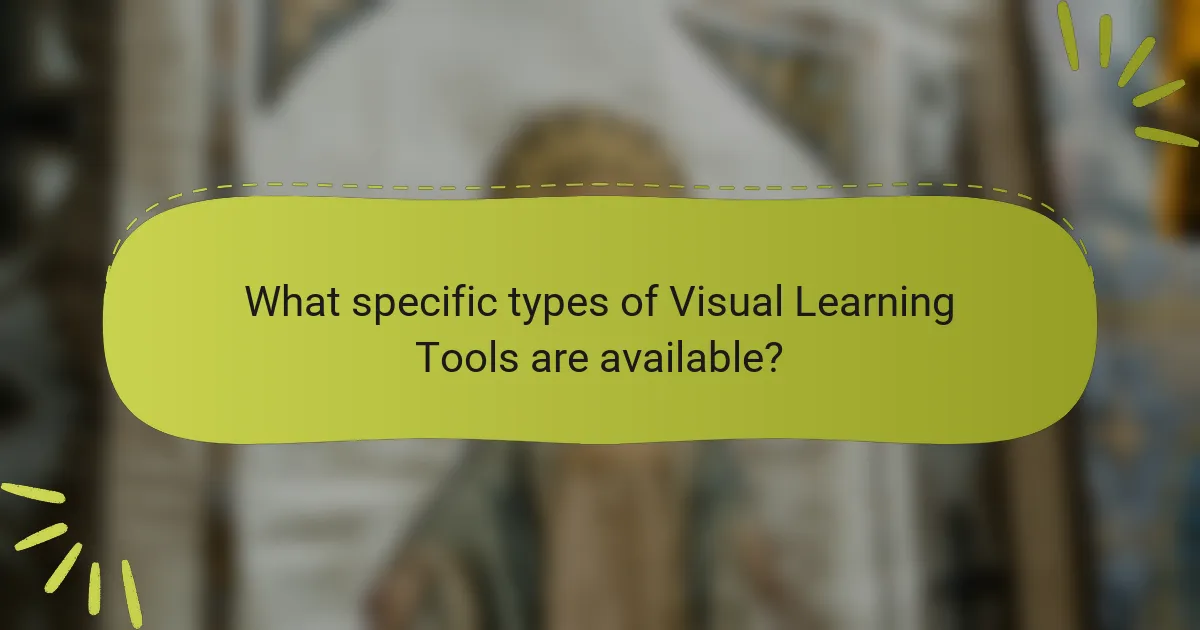
What specific types of Visual Learning Tools are available?
Visual learning tools include various types designed to enhance understanding. Examples are diagrams, charts, and mind maps. These tools help in organizing information visually. Additionally, infographics and videos are popular for conveying complex concepts. Interactive simulations also serve as effective visual aids. Whiteboards and digital drawing tools allow for real-time illustration of ideas. Visual learning tools can facilitate better retention and comprehension of mathematical concepts. Research indicates that visual aids improve learning outcomes significantly.
What are the most popular visual tools used in mathematics?
Graphs, charts, and diagrams are the most popular visual tools used in mathematics. Graphs represent data visually, making relationships and trends easier to identify. Charts, such as pie charts and bar graphs, help in comparing quantities effectively. Diagrams illustrate mathematical concepts, such as geometric shapes and transformations. Visual tools enhance understanding by simplifying complex information. They are widely used in educational settings to aid learning. Studies show that visual aids improve retention and comprehension in students.
How do manipulatives contribute to mathematical understanding?
Manipulatives enhance mathematical understanding by providing hands-on experiences. They allow learners to visualize abstract concepts. This tactile engagement aids in grasping operations like addition and subtraction. Research shows that students using manipulatives perform better in problem-solving tasks. A study by Clements and Sarama (2009) found that manipulatives significantly improve learning outcomes in early mathematics. They also promote critical thinking and reasoning skills. By interacting with physical objects, students can explore mathematical relationships more effectively. This approach supports diverse learning styles, making math more accessible for all learners.
What role do graphic organizers play in visual learning?
Graphic organizers facilitate visual learning by providing structured frameworks for information. They help learners organize thoughts and concepts visually. This organization enhances comprehension and retention of material. Research shows that visual aids improve understanding in subjects like mathematics. For instance, a study by Marzano et al. (2001) highlights that graphic organizers can increase student achievement. They simplify complex information, making it accessible. Additionally, they promote critical thinking and connections between ideas. Overall, graphic organizers are essential tools for effective visual learning.
How can technology enhance Visual Learning Tools in mathematics?
Technology can enhance visual learning tools in mathematics by providing interactive and engaging resources. Digital platforms allow for dynamic representations of mathematical concepts. For example, software like GeoGebra enables students to visualize geometric transformations in real-time. This immediate feedback helps learners understand complex ideas more effectively. Additionally, augmented reality (AR) applications can overlay mathematical models onto the physical world, making abstract concepts more tangible. Research shows that students using technology-driven visual tools perform better in problem-solving tasks. A study by the National Mathematics Advisory Panel found that visual aids significantly improve comprehension and retention of mathematical principles. Thus, technology plays a crucial role in enhancing visual learning tools for mathematics.
What are the benefits of using software and apps for visual learning?
Software and apps for visual learning enhance understanding through interactive and engaging content. They provide visual aids like graphs, charts, and animations that simplify complex concepts. This visual representation helps learners retain information better. Research shows that students using visual learning tools score higher in assessments. According to a study by Mayer (2009), multimedia learning improves knowledge retention by 50%. Additionally, these tools allow personalized learning experiences that cater to individual learning paces and styles. They also facilitate collaboration among learners through shared digital platforms. Overall, software and apps make learning more accessible and effective.
How do interactive whiteboards improve engagement in math lessons?
Interactive whiteboards enhance engagement in math lessons by facilitating interactive learning experiences. They allow teachers to present dynamic visual content, making abstract concepts more tangible. Students can actively participate by solving problems directly on the board. This interactivity encourages collaboration among peers. Research shows that students are more motivated to learn in visually stimulating environments. A study by the University of Illinois found that interactive tools increase student participation by 60%. This increased engagement leads to better retention of mathematical concepts. Overall, interactive whiteboards transform traditional teaching methods, fostering a more engaging learning atmosphere.
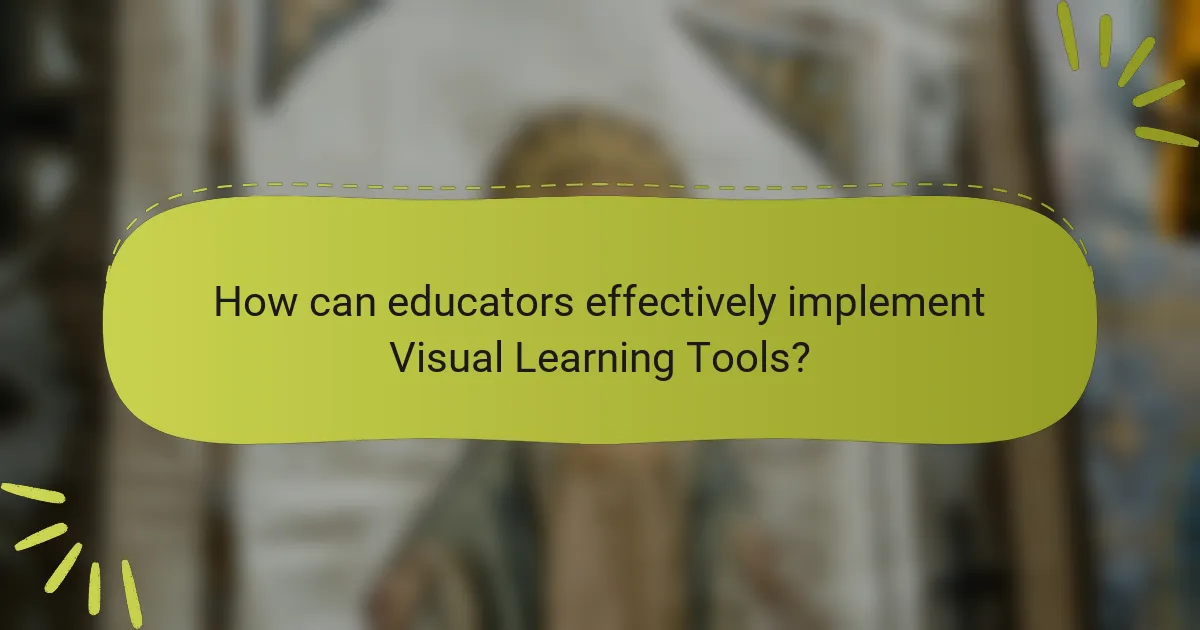
How can educators effectively implement Visual Learning Tools?
Educators can effectively implement Visual Learning Tools by integrating them into lesson plans. This approach enhances student engagement and comprehension. Tools such as diagrams, charts, and interactive software help illustrate complex concepts. Research indicates that visual aids can increase retention rates by up to 65%. Teachers should select tools that align with learning objectives. They can also encourage students to create their own visual representations. This practice fosters deeper understanding and personal connection to the material. Regular feedback on these tools can improve their effectiveness over time.
What strategies can teachers use to integrate visual tools into their curriculum?
Teachers can integrate visual tools into their curriculum by employing several strategies. One effective method is using graphic organizers. These tools help students visually structure information, enhancing comprehension. Another strategy is incorporating visual aids such as charts and diagrams. Research shows that visuals can improve retention by up to 65%. Teachers can also use technology, like interactive whiteboards, to present visual content dynamically. Additionally, incorporating videos can provide visual context to complex concepts. Group activities using visual tools foster collaboration and deeper understanding. Lastly, providing students with opportunities to create their own visual representations reinforces learning. These strategies collectively enhance students’ mathematical understanding through visual learning.
How can educators assess the impact of visual learning tools on student performance?
Educators can assess the impact of visual learning tools on student performance through various methods. One effective approach is to conduct pre- and post-assessments. This measures student understanding before and after using visual tools. Educators can also analyze student engagement levels during lessons. Increased interaction often correlates with improved performance.
Additionally, educators can gather qualitative feedback from students. Surveys or interviews can provide insights into student perceptions of the tools. Performance data from standardized tests can also be compared. This helps to identify trends in achievement linked to the use of visual aids.
Research indicates that visual learning tools can enhance comprehension. A study by Mayer (2009) shows that students who use visual aids outperform those who do not. This provides concrete evidence supporting the effectiveness of these tools in education.
What best practices should educators follow when using Visual Learning Tools?
Educators should ensure clarity and relevance when using Visual Learning Tools. Clear visuals enhance understanding and retention. Relevant visuals connect to the mathematical concepts being taught. Educators must choose tools that align with learning objectives. Tools should facilitate active engagement among students. Incorporating diverse formats, such as diagrams and videos, caters to different learning styles. Regularly soliciting student feedback improves the effectiveness of these tools. Research indicates that visual aids can improve student performance by up to 30% in mathematics. Properly implemented, Visual Learning Tools can significantly enhance mathematical understanding.
How can teachers tailor visual tools to meet diverse student needs?
Teachers can tailor visual tools to meet diverse student needs by adapting content to various learning styles. They can use diagrams, charts, and videos to present information visually. This approach aids students who benefit from visual learning. Teachers can also modify the complexity of visual tools based on student comprehension levels. For instance, simplified graphics may help struggling learners, while advanced visuals can challenge more capable students. Additionally, incorporating interactive elements allows students to engage actively. Research shows that using varied visual tools can enhance understanding in mathematics (Miller et al., 2019, Journal of Educational Psychology). This adaptability ensures that all students have access to effective learning resources.
What common challenges might educators face when implementing these tools?
Educators often face several common challenges when implementing visual learning tools for enhanced mathematical understanding. One challenge is a lack of training in using these tools effectively. Research indicates that 60% of teachers feel unprepared to integrate technology into their lessons. Additionally, limited access to resources can hinder implementation. Some schools may not have the necessary technology or software available. Resistance to change among educators can also be a significant barrier. Many educators prefer traditional teaching methods and may be reluctant to adopt new approaches. Furthermore, ensuring that all students can engage with visual tools presents challenges. Diverse learning styles and abilities require tailored approaches. Finally, time constraints in the curriculum can limit opportunities for educators to explore and implement these tools fully.
What tips can enhance the use of Visual Learning Tools in mathematics?
Utilizing visual learning tools in mathematics can be enhanced by integrating interactive elements. Interactive elements, such as digital manipulatives or software, promote engagement. They allow students to explore mathematical concepts hands-on. Incorporating real-world examples can also enhance understanding. Real-world applications make abstract concepts more relatable. Visual aids, like graphs and charts, should be used to illustrate data effectively. They provide clarity and improve retention of information. Encouraging collaborative learning through group activities can further enhance the experience. Group work fosters discussion and deeper understanding of concepts. Regular feedback on the use of visual tools helps students adjust their learning strategies. Feedback ensures that students stay on track and understand their progress.
Visual learning tools are resources that utilize visual aids such as diagrams, graphs, charts, and manipulatives to enhance mathematical understanding. These tools facilitate comprehension by providing visual representations of abstract concepts, thereby improving retention and problem-solving abilities. The article explores the types of visual aids commonly used in mathematics, their benefits in catering to diverse learning styles, and the role of technology in enhancing these tools. Additionally, it discusses effective strategies for educators to implement visual learning tools in their curriculum and the challenges they may face in doing so.
